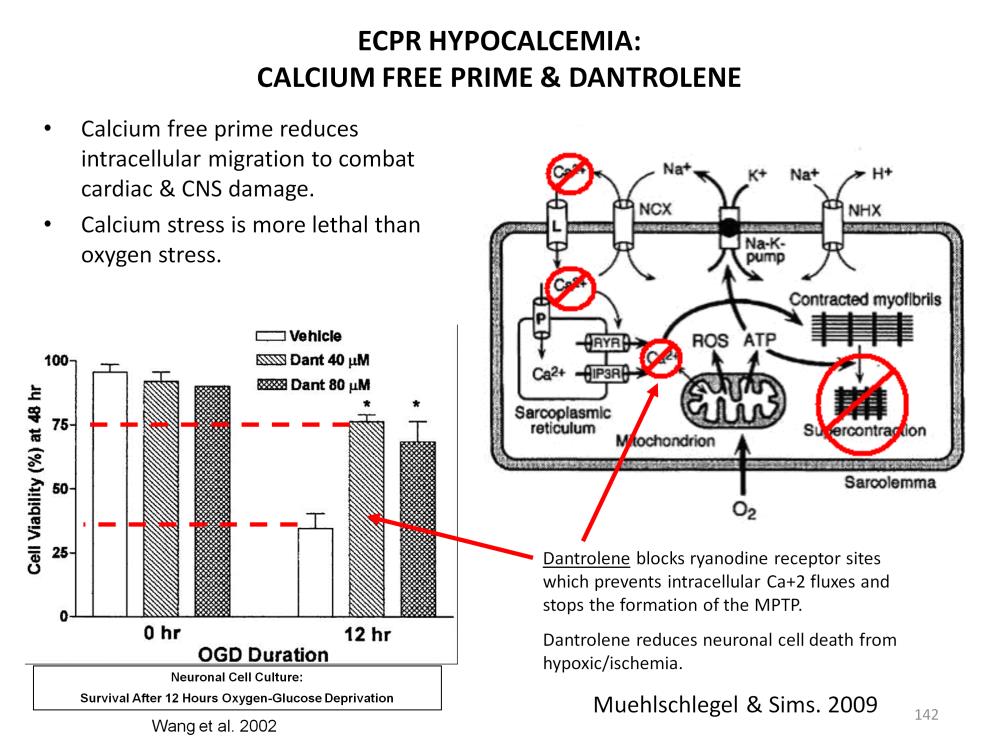
Calcium is the unrecognized villain in reperfusion injury and is probably the most difficult to control. The use of a calcium free perfusate in the pump is one intervention that ECPR can utilize in an attempt to reverse the calcium flux into the ischemic cells.
The calcium is released into cells through ryanodine receptors (RyRs) which are calcium channels present in excitable tissues like cardiac myocytes, cardiac conduction cells and central nervous system neurons. RyRs are the major cellular mediators of calcium-induced calcium release in animal cells. During reperfusion there is an uncontrolled increase in cytosolic calcium known as a “calcium spark”. The calcium spark causes mitochondrial permeability transition pores (MPTP) to open uncontrollably. The leaking mitochondrial membranes cause swelling, ATP release and accelerated cell death (apoptosis).
A drug that holds promise for dealing with calcium stress is Dantrolene sodium. Dantrolene is a drug that specifically blocks the flow of calcium through the RyR channels and prevents the MPTP from opening. Normally used to block the hypermetabolic effects of variants of malignant hyperthermia, Dantrolene has been shown to have protective effects on ischemic cardiac and neural cells. Dantrolene has few side effects and may have the potential to become useful in the prevention of reperfusion injury of all kinds, from transplant organs to patients undergoing CPR.
In an experiment by Wang et al in 2002, a control culture of neurons and 2 experimental Dantrolene treated neuronal cultures were subjected to 12 hours of simulated hypoxic/ischemia. Forty-eight hours after reintroducing oxygen the surviving cells were counted. Only about 30% of the control culture cells were viable, but 75% of the Dantrolene treated cells were still alive. Assuming that the Dantrolene successfully blocked the effects of calcium stress, the non-viable cells in the experimental cultures probably succumbed to oxygen stress which Dantrolene cannot suppress. This experiment suggests that Dantrolene can significantly ameliorate reperfusion injury damage and that calcium stress is about twice as deadly as oxygen stress in causing cell death from reperfusion injury.

Perfusion Theory is an educational platform for the Oxygen Pressure Field Theory (OPFT). August Krogh’s theoretical concept of the oxygen pressure field is explained and then applied to clinical applications in perfusion practice.